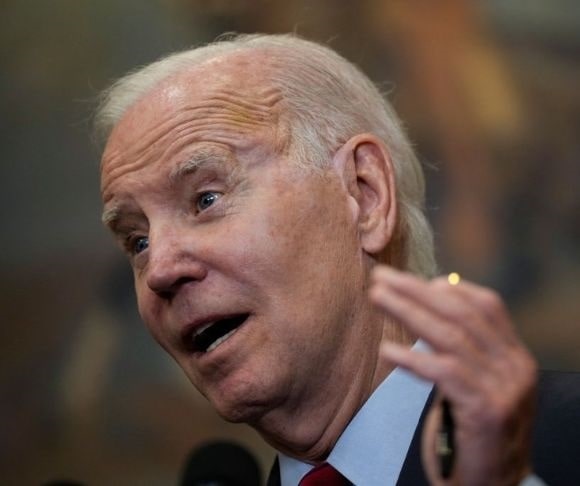When Joe Biden won the White House, it was a reasonably safe assumption that he would be a one-term president. After all, he had to be rescued from a badly faltering campaign in 2020 by a desperate Democratic Party establishment devoid of other presidential options — not because of his broad appeal but for the singular purpose of taking down Donald Trump. The longtime senator had already declared himself a transitional figure during his basement candidacy. And when he became the oldest president in American history, there was little reason to believe that would change. Few had voted for Biden so much as against Trump.
 But now, feeling emboldened by the midterm elections, and trillions in spending by his party on a massive expansion of government power, Biden is evidently feeling the wind at his back. And so, according to The Hill, he is planning to announce his candidacy for a second term around the time of February’s State of the Union address.
But now, feeling emboldened by the midterm elections, and trillions in spending by his party on a massive expansion of government power, Biden is evidently feeling the wind at his back. And so, according to The Hill, he is planning to announce his candidacy for a second term around the time of February’s State of the Union address.
This represents a rather dramatic turnaround for a president who many thought would be hard-pressed to actually make it through four years. Talk of one term only, or even having to turn the reins over to the vice president, became widespread when a disastrous withdrawal from Afghanistan six months into Biden’s administration was followed by the highest inflation in decades, soaring food and energy prices, an economy teetering on the brink of recession, stubbornly high crime rates, and a full-blown border crisis, producing approval numbers that dropped as low as the 30s. Even with Kamala Harris proving feckless and unelectable on her own, Biden looked for all the world like he would join the ranks of one-and-done presidents.
Biden and Visions of Grandeur
But the task of merely defeating Trump by posturing as a deceptively unthreatening centrist quickly morphed into visions of grandeur for the 46th president. Biden’s dreams of completing Barack Obama’s fundamental transformation of America with his own FDR-like vision, tied up in knots for months by intra-party wrangling, was finally untangled. And with the help of his cheerleaders in big media, Biden can now claim “credit” for running the national debt to once-unthinkable levels with trillions in spending on a pandemic bailout scheme, an infrastructure bill, the hilariously mislabeled Inflation Reduction Act that is actually about climate change, and most recently the massive omnibus package.

Joe Biden (Photo by Drew Angerer/Getty Images)
But if Biden was already leaning toward another run at the White House, the 2022 elections likely sealed the deal. He was clearly giddy that his party, with the help of the most conservative Supreme Court in decades reversing Roe v. Wade, had held the Senate and barely lost control of the House. And so, despite the fact that he would be 86 years old upon completion of a second term, holds an average 43% approval according to Real Clear Politics, and a majority of Democratic voters don’t want him to run again, Biden appears set to seek four more years.
The recent announcement by the Democrats’ most widely heralded prospective presidential candidate, California Gov. Gavin Newsom, that he would stay out of the race in 2024 was apparently a foreshadowing of Biden’s decision. And as things stand now, any other primary challenge to the incumbent appears unlikely. But, of course, the almost two years between now and the next presidential contest is an eternity in politics, and this president continues to display transparent signs of continuing cognitive decline. But for now, the question is whether the newfound certainty of Biden’s candidacy means Republicans are more likely to again opt for Trump and a rematch of 2020 or for a younger candidate such as Ron DeSantis or Glenn Youngkin. The race is on, and with the Democrats apparently settled on the same guy most people thought and/or hoped would not run again, the ball is now squarely in the Republicans’ court.




